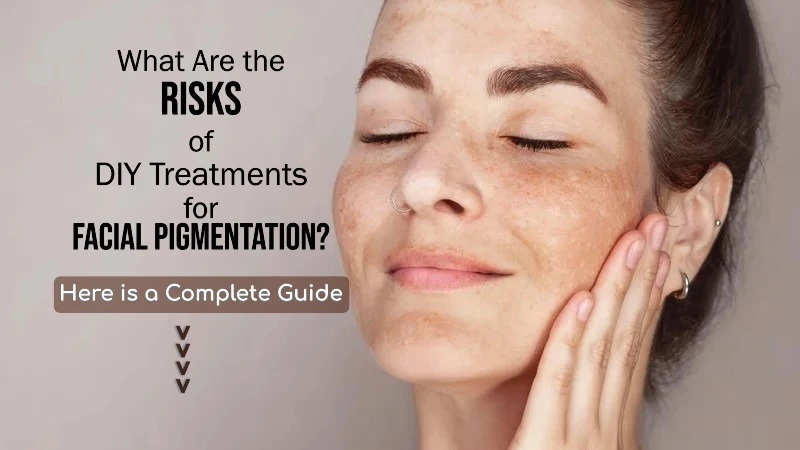What Are the Risks of DIY Treatments for Facial Pigmentation? Understanding the Hidden Dangers to Your Skin
What Are the Risks of DIY Treatments for Facial Pigmentation? Understanding the Hidden Dangers to Your Skin
Facial pigmentation—whether it’s melasma, sunspots, or post-inflammatory hyperpigmentation—can be frustrating, leading many people to try quick fixes at home. Social media, beauty blogs, and home remedy channels are filled with tips and recipes promising glowing, even-toned skin using ingredients found in your kitchen. But while the idea of DIY treatments seems harmless and natural, the reality can be very different. Let’s explore the real risks of treating facial pigmentation yourself and why expert guidance is often the safer path.
Risk 1: Skin Irritation and Allergic Reactions
One of the biggest dangers of DIY pigmentation treatments is irritation. Common home remedies like lemon juice, apple cider vinegar, and baking soda are highly acidic or abrasive. Applying them directly to the skin can disrupt your skin barrier, leading to redness, burning, peeling, or rashes. In people with sensitive or darker skin, irritation often triggers post-inflammatory hyperpigmentation, making dark spots worse instead of better.
Additionally, some natural ingredients can cause allergic reactions. For example, turmeric, honey, or essential oils may seem gentle but can lead to itching, swelling, or contact dermatitis if your skin is sensitive or if you use them in high concentrations.
Risk 2: Uneven Results and Worsening Pigmentation
Pigmentation issues are complex and vary from person to person. DIY treatments often lack the precision to target pigment safely and evenly. Without proper knowledge of skin type and pigment depth, you may end up lightening some areas too much while leaving others unaffected, creating an uneven skin tone.
In conditions like melasma, common among people with medium to darker skin tones, harsh home remedies can actually stimulate melanocytes (pigment-producing cells), worsening pigmentation over time.
Risk 3: Long-Term Damage to the Skin Barrier
The skin barrier is essential for keeping moisture in and irritants out. Repeated use of acidic, abrasive, or highly concentrated DIY masks and scrubs can weaken this barrier, leading to chronic dryness, sensitivity, redness, and even eczema-like symptoms. Once the barrier is damaged, your skin is more vulnerable to UV rays and pollution, which can further increase pigmentation.
Risk 4: Overuse and Lack of Regulation
Many DIY treatments circulate online without clear instructions on frequency or safe concentrations. Applying treatments too often or in excessive amounts increases the risk of burns and scarring. Unlike professionally formulated products, home remedies aren’t tested for safety, stability, or effectiveness.
Why Expert Advice Matters
A dermatologist can accurately diagnose the type and cause of your pigmentation and recommend safe, effective treatments—whether it’s topical creams (like retinoids or hydroquinone), chemical peels, microneedling, or laser therapy. Professional treatments are backed by research, tailored to your skin type, and monitored to minimize risks.
Key Takeaway
DIY treatments for facial pigmentation may seem quick, cheap, and natural—but they can bring hidden dangers like irritation, uneven skin tone, and permanent scarring. Treating pigmentation safely requires understanding your skin’s unique needs and often, guidance from a skincare professional.
If you want to explore safer at-home options, consider gentle, dermatologist-recommended products like vitamin C serums, azelaic acid, or niacinamide, and always use sunscreen daily to protect against further pigmentation.

Related Blog
What Causes Oily Skin and Can It Be Managed Naturally? Exploring Root Causes and Gentle Solutions
Aug 2, 2025 by Admin
General
What Are the Signs That You Have Sensitive Skin? Key Symptoms to Help You Identify This Delicate Skin Type
Aug 1, 2025 by Admin
General